A Tutorial in Digital Fine Art II by Khobe
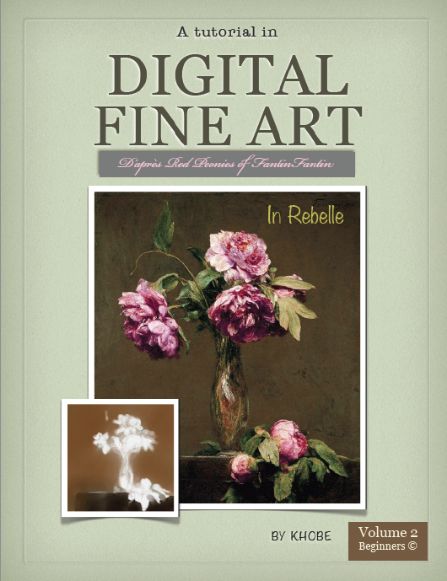
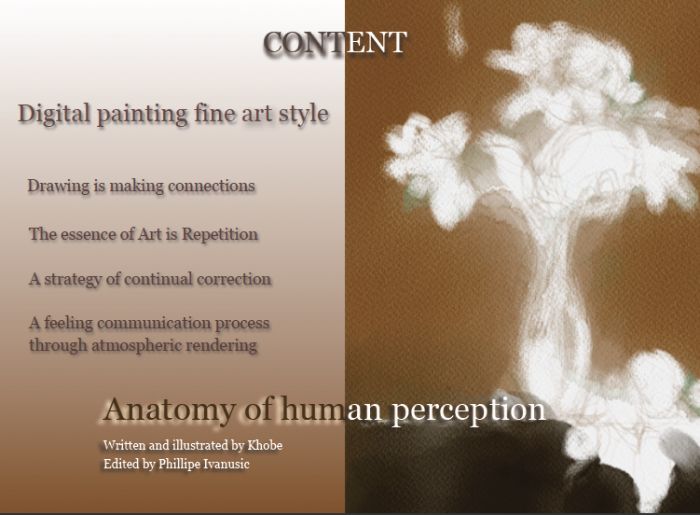
Introduction to deeper artistic insights
Art doesn’t enjoy the same respect as it did in days past, before it was divorced from science and spirituality. The reason for this is not because it’s less useful in fact it’s the opposite, more like taken apart and turned into a beast of burden. As we go back in time, the more we see art being seamlessly integrated with these two other hallmarks of human intelligence mentioned above. New findings by professional engineers in alternative and revised archeology reveal contrary to modern tenets, that old civilisations with their monumental architecture, shattered artifacts and artworks, were in fact way more technologically advanced than previously believed. It becomes embarrassing the further we go back in time when we investigate megalithic sites. We are forced to recognise in amazement, we can’t reproduce with our modern technology this level of artistic engineering buried in our subconscious memory. Is found in the architectural concepts of these monuments a highly sophisticated scientific knowledge, revealing universal mathematical constants written in stone. Even more paradigm shifting and mind blowing is the fact they were built with the same fractal canonic qualitative space/time metrological system (preserved in classical arts to this day) elaborated in a single gigantic planetary network complex. This stunning planetary network complex can only be appreciated from above the earth, leaving us with a myriad of question marks.
Established modern academia is stubbornly hanging on to darwinism and it’s never proven theory of evolution, triggering it’s own agonising crisis. Burying itself epistemologically in the nineteenth century strict materialistic mentality, dodging what it cannot explain. Art also caught in this deep ontological crisis, forced consequently to
renew itself again, going back to the creative consciousness principle away from psychotic corporate slavery. Before anything else though, artists need to understand the nature of this crisis. I will do my best to sketch it, but each artist will have to wrestle with and surrender to their own muse. The objective is to recall the mystical integrating attributes basic to the eternal Beauty Way_ harmony, immanence and wholeness. Of all places paradoxically, it is in the middle of destruction that can be found the most profound «cathartic» transcendence or else.
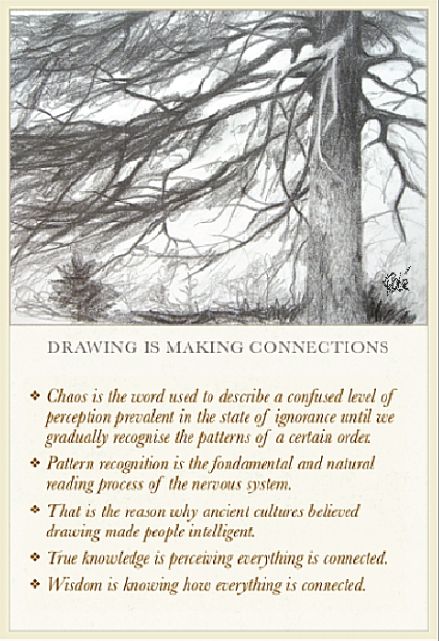

Perception is primary in fine art as in all traditional arts. Going back to the original painting of Fantin Latour we must apply a simplifying strategy revealing it's fundamental patterns. The first level of perception must be the most inclusive with the simplest shapes shapes possible, an oval comprising a pentagon. This first shape must be sketched lightly, loosely and fast like you see next.
It took only a minute to do the first sketch below and nothing is missing, aiming for the general outlook. An approximation is all I needed to start the best way possible. A good sketch preserves poetic spontaneity, warmth and fluidity of execution, in a word: natural elegance.
Why elegance? Strangely our brain prefers this treatment because attention goes straight to the subject, not how it’s been done. The subject is given the main stage by power of recognition; style is given the supporting role. A professional show has only one star, a foremost and powerful artistic rule!
Linear sketch # 1

The subject must be placed and kept correctly in the general space of the canvas to the last stroke. This goes without saying, but how many times have I seen students inconveniently loose their subject’s general proportions or part without noticing as they went along, only to find out at the end something is wrong. We all do this as beginners, Don’t make a habit of succumbing to temptation of doing whatever, missing the challenge, so your skills won’t grow. I started at the beginning like everybody else and had to do my homework to get better. Getting better at making art is measured by perseverance.
In a sense our biggest decision is to stick or not to a discipline, with the logical results of this decision. If you do, you will be rewarded a hundred times for the efforts you put in. If you find this is something you don’t have in your heart to do, that’s okay. Maybe academic fine art is not for you, nobody is judging you. So have fun with art and be a good public.
The essence of art is_ REPETITION. Please don’t count the times you start over. Actually if you like getting better you want to do this relentlessly like a positive addiction. Love of art is it’s own justification or motivation; it’s all inside, a calling from the inner voice. Not to be ignored or treated lightly because this is where we engage our artistic destiny and purpose. Otherwise we’re bound for senselessness, boredom and regrets, all dangerous spirit killers.
Painted Sketch # 2
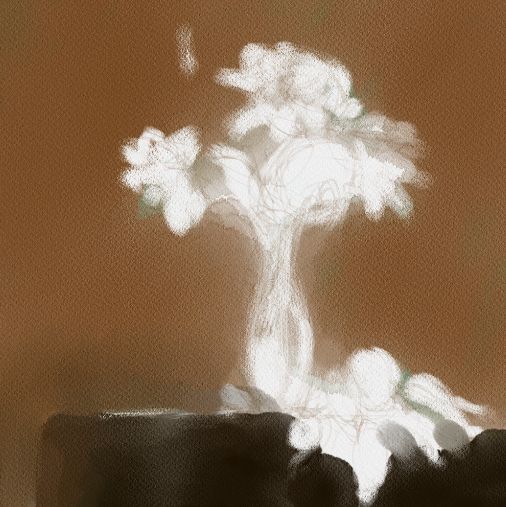
Blocking the entire surface loosely is done in a few minutes. Each step helps situate and keep in place the general subject in context while working the whole canvas, not getting bogged down with details. This classical process of execution to the final stages of the work was developed and refined down the centuries. This quality treatment called «bravura» is not easily mastered but greatly admired by contemporary artists.
Practicing correctly is paramount, beware of repeating constantly the same mistakes without correction, becoming your training. Bad habits are hard to break. To make the appropriate corrections you need good models. You will find many in art books, art magazines, internet, libraries and museums. I would suggest classical masters of your liking. Surprisingly many artists have not had formal training in art schools and became masters all the same because they chose to work from excellent models.
Painted sketch # 3

Painted sketch # 4

Self-trained artists have my respect because it takes special dedication to become a master, more so by yourself. You have to believe in yourself and your talent even if others don’t see it. Putting your work out there to be judged takes courage. People who don’t do art could be oblivious to what you put in it of your soul. So go slow, take the time to learn well and follow your heart.
The secret behind a successful self-trained mastery program is not only perseverance. The judicious choice of great models is paramount. Making copies of masterworks is thus essential but also meditation on the same. Historical research is in the program too. A tree must grow strong roots in order to elevate it’s trunk and limbs higher. I can guide you so far with these lessons, only taking effect with your practice turned into experience. A good teacher, which I invite you to find, can put you on the best path possible, teaching you intelligent shortcuts that are not mere tricks. Investing time and effort on a regular basis to fulfill your artistic goal is testament of your art. Be proactive and humbly daring, take calculated risks and innovate. Who knows it might go faster than you think.
Art is about bringing forth your inspiration and visions, You will need to stand by them whatever. I want my tutorials to equally be useful for the self-trained and the formally trained artist, pointing not only on developing artistic skills, but on nurturing the necessary elements sustaining them.
You need a practical strategy, set clear parameters as the kind of art you want to do, let your preferred style be a compass. This will give you a direction. Then pace your practice. First try your hand at simple geometric shapes of inanimate round objects in your immediate surroundings like vases, cups, drinking glasses, bowls, balls, lamps. When comfortable with that, try your hand slowly at more complicated shapes of flora and fauna, one object at a time.
I advise not to practice only one kind of subject to the exclusion of others as you get better. Don’t be afraid to explore and extend your artistic territory, or even go back to perfect your approach because the goal is to become good at drawing techniques not at a subject in particular.
Subject, medium and size are secondary, technique must comes first of all other considerations when aiming for mastery... and mastery is the opposite of control! In any art expression true power is transparent and discreet, a strong invisible sustaining base.
Beginners tend to concentrate on performance, this is a common mistake. Attention should first be put on breathing and muscle relaxation while sketching. Get a feel for shapes, not maniac precision. Remember art is not a mental exercise, it’s a gut exercise. Don’t worry your head will follow. The great news is if you master anything in any field, it will ripple on any other discipline making it easier to master as a bonus. As you can see from one sketch to the next I build my painting very slowly.
Painted sketch # 5
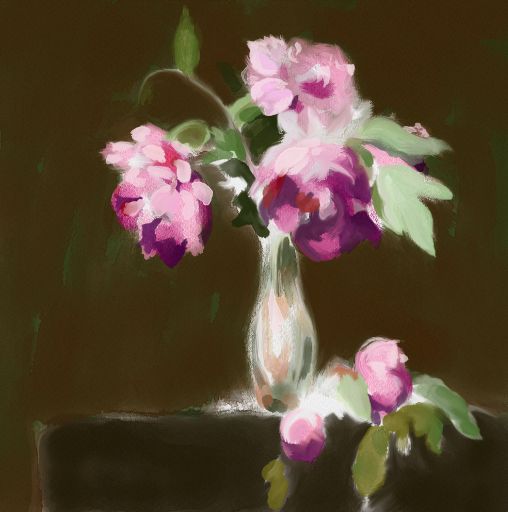
I circumscribe a little tighter with every pass rather than hurry to the finish line. I deliberately take my time dabbling and adjusting the tone values and the colors chromatically on the whole as I go along. I insist on this kind of procedure because it’s not the modern way. Excellence of execution and mental stress are enemies. Cultivate the capacity to be in a light trance at will, center on feeling attention (alpha brain waves), without analytical attention (beta waves) crucial to artistic execution. Put another way, it is about getting really intimate with your art, it’s a love relationship. Only then people will start feeling your art. Rembrandt is a good example of this, so is Vermeer and Degas.
Painted sketch # 6
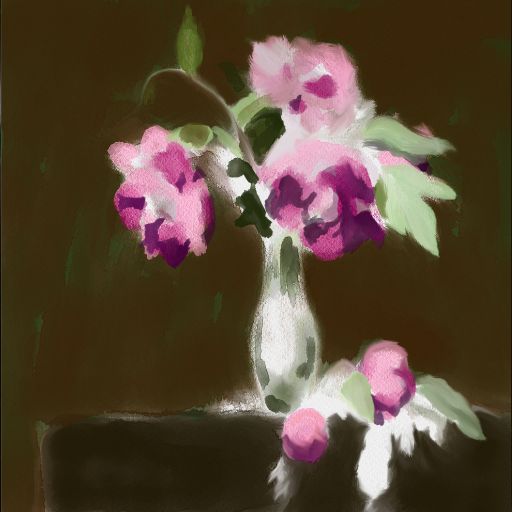
This systematic approach will prove it's worth every time but won't look like much action. You’d get bored pretty fast watching me paint, though this technique is the fastest. When you concentrate on deeper cognitive levels you enter into another chronology belonging to wider levels of consciousness. This is why the artistic mindset is so close to the spiritual mindset, both cultivate and focus on the act of contemplating. After all the care I can put into a work if I feel the need to redo a big part or the whole thing, I will not hesitate to erase or scrape it off. I can go as far as to start on a new surface if I feel the concept needs to be revised.
Painted sketch # 7
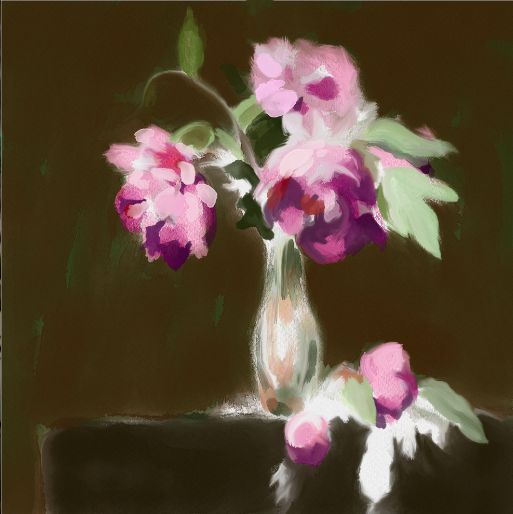
A faulty concept will collapse under the weight of our efforts and will not support our artistic intent. Today in the break neck paced world even artists tend to be ignorant of the time it takes to get to artistic essential maturity. But isn’t this a prevalent sorrowful condition in all fields in the world now? Quality comes from the time we take to bring care to what we are and what we do. To attain a high level of mastery you have to become a good poet, storyteller, a seer, a spatial architect, a thorough researcher and experimenter, doubled with an eternal apprentice of the craft. Unknowing people think art is easy, let’s not confuse relaxed, mindful and psychologically concentrated with easy, the-se are light years apart.
Painted sketch # 8
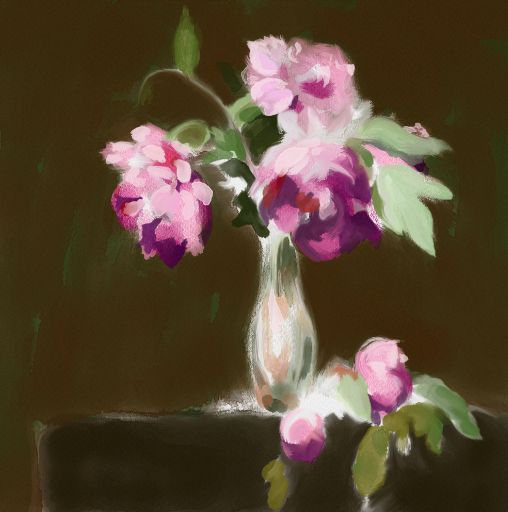
A Feeling Communication Process
through atmospheric rendering
Communication is much more than sharing information. Look at the words_ act/ion as one and in/form/a c tion, don’t confuse their meaning. Communication is empathy, almost symbiotic. As drawing and painting use spatial structuring, lines, shapes, tone values and colors to convey feelings at bioimpulse levels, analogous to sound before composing words. Beyond self-expression, is an expression of a higher enigmatic "artistic entity", belonging to the realm of archetypes. The interplay of dark and light, negative and positive spaces, are the elements generating: comedy, drama and tragedy.
Comedy caricatures contradictions and paradoxes, drama highlights struggles, tensions, contrasts and oppositions, and tragedy is about the fatalities of unforgiving destiny. Heroism is born of confronting drama and tragedy, in art’s enigmatic mirror.
Art tools and means are humble but designed to implicate far-reaching meaning, from basic unconscious instinctual levels, to semi-conscious, to deep insights of mystical levels.
Art has it's own alphabet, vocabulary, semantics and codes, in a word it is a metalanguage emanating from universal imagination hidden in the arcanes of nature. It has it's own mind, the "artistic spirit", we can open ourselves to. We cannot possess or force it, if we do, it leads us astray and fools us with our own petty pretensions. When we respect it, it can reward us with a new light on the mysteries of symbolism and discreet metaphors, reveal the workings of nature’s creation laws. Learning the artistic language demands to educate ourselves with inspiring works of art and to surround ourselves with them as much as possible, be it with prints, art books, videos, films and internet.
Practice silent contemplation of nature and immediate environment, searching for the laws of harmony beyond the pleasurable. Exercise openness of mind and focus without forcing, the more you do, the better you will become at it. When the mind is calm and focused, it’s ready for the technical side of art. In a relaxed and natural deep breathing mode, the mind easily penetrates, holds and explores inspired visions.
The contemporary world is a big attention grabber, it pulls us outside ourselves constantly, it’s distractions are a big waste conduit for our nervous energy. Artists need to set time aside for psychological replenishment on a regular basis. Stopping the outer world to go back to the inner world, back to the feeling world without drowning in it. Becoming skilled at identifying feelings and emotions. Mastering the alpha trance, commanding it at will to feed artistic awareness, nurturing the basic foundation our craft because it is first and foremost a way of being.
We don’t live in the past
However we might admire the great works of art of the past, this is not where we live. We must make do with what we have now, and make it better to be fair to those who follow us. The past is a reference, a source of inspiration, teachings and understandings, but it is not our destination. Much was lost so we must search, much was filtered falsely so we must rectify, much will never be regained so we must create.
Human knowledge needs to be carefully protected but not worshiped. Every time we try to control in fear of loss we impoverish ourselves. Mastery is not about control, it’s about the courage to honor the heart. It is always the most difficult choice, to which we must bring balance in the struggle we transform into a dance, pain into ecstasy, blindness into clear vision. We are only as good as our last work of art, we cannot claim anything else. Beauty is a subtle and powerful enchantress we behold in the sobriety of humble discipline, otherwise she doesn’t keep bestowing upon us her elevating grace.
Khobe
Well Strovey, just glad to be of some help. I never tell anyone what kind of artists they should be, this is too much of an intimate soul question for me to judge. I'm an heir of the traditional master's technique, this is where my artistic soul is and thrives, only want to share to the best of my abilities.
Hi Khobe, I have followed your tutorials don't worry my friend. I always find it amazing how people no matter their gender, background, age or any circumstance, if they create, paint or draw they always seem to be similar. Parts of your tutorials I actually already do without ever being taught to - weird huh? Others parts I found very helpful. I think my method of painting is like Jack Vettriano, slightly grumpy, likes to be left alone when at work, unfortunately I'm not as good as him and I love the style of Christian Hook, as I've posted before but I don't want to copy him but take some of his style [particularly in portraits] and add it to mine. If that makes sense? Anyway keep these coming and I'll come back to read them!
This is the follow up to the first tutorial on digital academic fine art sketching and painting.